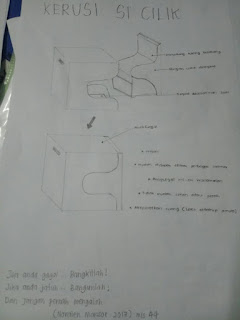Sure, you can lose weight quickly.
There are plenty of fad diets that
work to shed pounds rapidly -- while leaving you feeling hungry and
deprived
But what good is losing weight only to
regain it? To keep pounds off permanently, it's best to lose weight slowly. And
many experts say you can do that without going on a "diet." Instead,
the key is making simple tweaks to your lifestyle
- Eat Breakfast Every
Day. One habit that's common to many people who have lost weight
and kept it off is eating breakfast every
day. "Many people think skipping breakfast is a great way to cut
calories, but they usually end up eating more throughout the day, says
Elizabeth Ward, MS, RD, author of The Pocket Idiot's Guide to the
New Food Pyramids. "Studies show people who eat breakfast have
lower BMIs than breakfast-skippers and perform better, whether at school
or in the boardroom." Try a bowl of whole-grain cereal topped with
fruit and low-fat dairy for a quick and nutritious start to your day.
- Close
the Kitchen at Night. Establish a time when you will stop eating
so you won't give in to the late-night munchies or mindless snacking while
watching television. "Have a cup of tea, suck on a piece of hard
candy or enjoy a small bowl of light ice cream or frozen yogurt if you
want something sweet after dinner, but then brush your teeth so
you will be less likely to eat or drink anything else," suggests
Elaine Magee, MPH, RD, WebMD's "Recipe Doctor" and the author
of Comfort
Food Makeovers.
- Choose
Liquid Calories Wisely. Sweetened drinks pile on the calories,
but don't reduce hunger like solid foods do. Satisfy your thirst with
water, sparkling water with citrus, skim or low-fat milk, or small
portions of 100% fruit juice. Try a glass of nutritious and low-calorie
vegetable juice to hold you over if you get hungry between
meals. Be careful of alcohol calories, which add up quickly. If you tend
to drink a glass or two of wine or a cocktail on most days, limiting
alcohol to the weekends can be a huge calorie saver.
- Eat
More Produce. Eating lots of low-calorie, high-volume fruits
and vegetables crowds out other foods that are higher in
fat and calories. Move the meat off the center of your plate and pile on
the vegetables. Or try starting lunch or dinner with a vegetable salad or
bowl of broth-based soup, suggests Barbara Rolls, PhD, author of The Volumetrics Eating
Plan. The U.S. government's 2005 Dietary Guidelines suggest that
adults get 7-13 cups of produce daily. Ward says that's not really so
difficult: "Stock your kitchen with plenty of fruits
and vegetables and at every meal and snack, include a few
servings," she says. "Your diet will be enriched with vitamins,
minerals, phytonutrients,
fiber, and if you fill up on super-nutritious produce, you won't be
reaching for the cookie jar."
- Go
for the Grain. By substituting whole grains for refined grains
like white bread, cakes, cookies, and pretzels, you add much-needed fiber
and will fill up faster so you're more likely to eat a reasonable portion.
Choose whole-wheat breads and pastas, brown rice, bran flakes, popcorn,
and whole-rye crackers.
- Control
Your Environments. Another simple strategy to help cut calories
is to control your environment -- everything from stocking your kitchen
with lots of healthy options to choosing the right restaurants. That means
avoiding the temptation by staying away from all-you-can-eat restaurants.
And when it comes to parties, "eat a healthy snack before so you
won't be starving, and be selective when you fill your plate at the
buffet," suggests Ward. Before going back for more food, wait at
least 15 minutes and have a big glass of water.
- Trim
Portions. If you did nothing else but reduce your portions by
10%-20%, you would lose weight. Most of the portions served both in
restaurants and at home are bigger than you need. Pull out the measuring cups
to get a handle on your usual portion
sizes, and work on paring them down. Get instant portion
control by using small bowls, plates, and cups, says Brian
Wansink, PhD, author of Mindless Eating. You won't feel
deprived because the food will look plentiful on dainty dishware.
- Add
More Steps. Get yourself a pedometer and gradually add more steps
until you reach 10,000 per day. Throughout the day, do whatever you can to
be more active -- pace while you talk on the phone, take the dog out for
an extra walk, and march in place during television commercials. Having a
pedometer serves as a constant motivator and reminder.
- Have
Protein at Every Meal and Snack. Adding a source of lean or
low-fat protein to each meal and snack will help keep you feeling full
longer so you're less likely to overeat. Try low-fat yogurt, small portion
of nuts, peanut butter, eggs, beans, or lean meats. Experts also recommend
eating small, frequent meals and snacks (every 3-4 hours), to keep
your blood
sugar levels steady and to avoid overindulging.
- Switch
to Lighter Alternatives. Whenever you can, use the low-fat
versions of salad dressings, mayonnaise, dairy products, and other
products. "You can trim calories effortlessly if you use low-fat and
lighter products, and if the product is mixed in with other ingredients,
no one will ever notice," says Magee. More smart substitutions: Use
salsa or hummus as
a dip; spread sandwiches with mustard instead of mayo; eat plain roasted
sweet potatoes instead of loaded white potatoes; use skim milk instead of
cream in your coffee; hold the cheese on sandwiches; and use a little
vinaigrette on your salad instead of piling on the creamy dressing.













